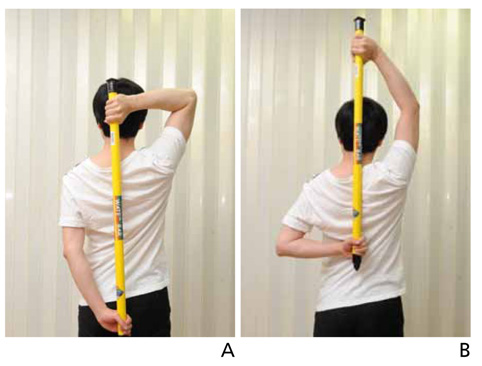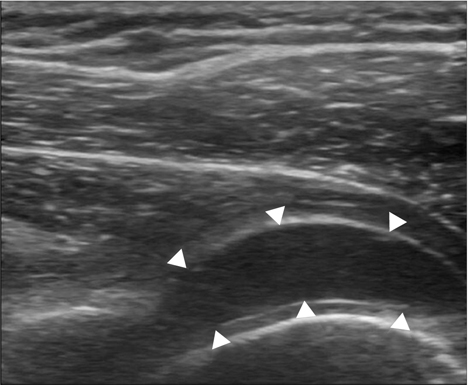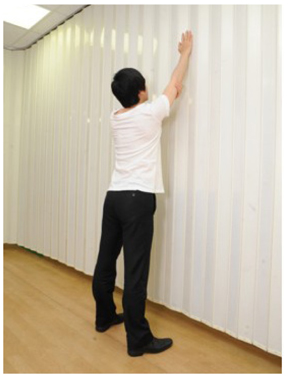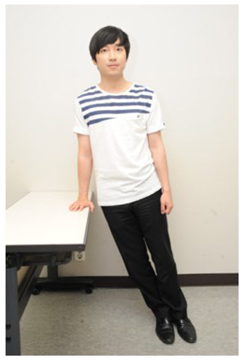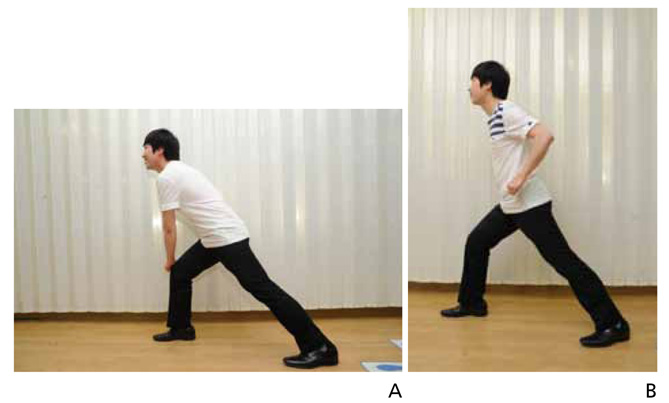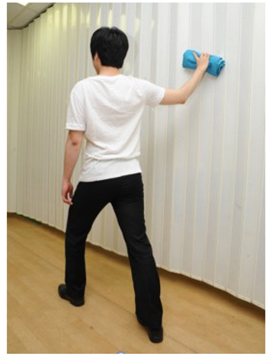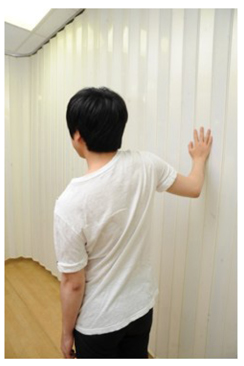J Korean Med Assoc.
2014 Aug;57(8):661-666. 10.5124/jkma.2014.57.8.661.
Conservative management of shoulder pain with common causes
- Affiliations
-
- 1Department of Rehabilitation Medicine, Seoul Metropolitan Government Boramae Medical Center, Seoul National University College of Medicine, Seoul, Korea. shiuk.lee@gmail.com
- KMID: 2194916
- DOI: http://doi.org/10.5124/jkma.2014.57.8.661
Abstract
- Shoulder pain presents with varying etiology and pathophysiology. At the time of initial evaluation, conservative management is applied in most cases. The therapeutic approach should be based on the cause of pain, which should be determined by the appropriate evaluation. Recovery of range of motion, strengthening of rotator cuffs and other shoulder muscles, and scapular stabilization are the main principles and purposes of shoulder rehabilitation. In this article, we introduce diagnosis-specific management approaches for common presentations of shoulder pain such as adhesive capsulitis, impingement syndrome or rotator cuff tendinosis, and calcific tendinitis.
Keyword
MeSH Terms
Figure
Cited by 1 articles
-
Diagnosis and non-operative treatment of shoulder pain
Shi-Uk Lee
J Korean Med Assoc. 2019;62(12):629-635. doi: 10.5124/jkma.2019.62.12.629.
Reference
-
1. Jain TK, Sharma NK. The effectiveness of physiotherapeutic interventions in treatment of frozen shoulder/adhesive capsulitis: a systematic review. J Back Musculoskelet Rehabil. 2013; 11. 27. [Epub]. http://dx.doi.org/10.3233/BMR-130443.
Article2. Russell S, Jariwala A, Conlon R, Selfe J, Richards J, Walton M. A blinded, randomized, controlled trial assessing conservative management strategies for frozen shoulder. J Shoulder Elbow Surg. 2014; 23:500–507.
Article3. Yoon SH, Lee HY, Lee HJ, Kwack KS. Optimal dose of intra-articular corticosteroids for adhesive capsulitis: a randomized, triple-blind, placebo-controlled trial. Am J Sports Med. 2013; 41:1133–1139.
Article4. Carette S, Moffet H, Tardif J, Bessette L, Morin F, Fremont P, Bykerk V, Thorne C, Bell M, Bensen W, Blanchette C. Intraarticular corticosteroids, supervised physiotherapy, or a combination of the two in the treatment of adhesive capsulitis of the shoulder: a placebo-controlled trial. Arthritis Rheum. 2003; 48:829–838.
Article5. Buchbinder R, Green S, Youd JM, Johnston RV, Cumpston M. Arthrographic distension for adhesive capsulitis (frozen shoulder). Cochrane Database Syst Rev. 2008; (1):CD007005.
Article6. Kim K, Lee KJ, Kim HC, Lee KJ, Kim DK, Chung SG. Capsule preservation improves short-term outcome of hydraulic distension in painful stiff shoulder. J Orthop Res. 2011; 29:1688–1694.
Article7. Vastamaki H, Kettunen J, Vastamaki M. The natural history of idiopathic frozen shoulder: a 2- to 27-year followup study. Clin Orthop Relat Res. 2012; 470:1133–1143.
Article8. Kibler WB, McMullen J, Uhl T. Shoulder rehabilitation strategies, guidelines, and practice. Orthop Clin North Am. 2001; 32:527–538.
Article9. Escamilla RF, Hooks TR, Wilk KE. Optimal management of shoulder impingement syndrome. Open Access J Sports Med. 2014; 5:13–24.
Article10. Kibler WB, Sciascia AD, Uhl TL, Tambay N, Cunningham T. Electromyographic analysis of specific exercises for scapular control in early phases of shoulder rehabilitation. Am J Sports Med. 2008; 36:1789–1798.
Article11. Han TR, Bang MS, Chung SG. Rehabilitation medicine. 5th ed. Seoul: Koonja Publishing;2014.12. Re LP Jr, Karzel RP. Management of rotator cuff calcifications. Orthop Clin North Am. 1993; 24:125–132.
Article13. De Witte PB, Selten JW, Navas A, Nagels J, Visser CP, Nelissen RG, Reijnierse M. Calcific tendinitis of the rotator cuff: a randomized controlled trial of ultrasound-guided needling and lavage versus subacromial corticosteroids. Am J Sports Med. 2013; 41:1665–1673.14. Gatt DL, Charalambous CP. Ultrasound-guided barbotage for calcific tendonitis of the shoulder: a systematic review including 908 patients. Arthroscopy. 2014; 05. 09. [Epub]. http://dx.doi.org/10.1016/j.arthro.2014.03.013.
Article15. Pan PJ, Chou CL, Chiou HJ, Ma HL, Lee HC, Chan RC. Extracorporeal shock wave therapy for chronic calcific tendinitis of the shoulders: a functional and sonographic study. Arch Phys Med Rehabil. 2003; 84:988–993.
Article16. Peters J, Luboldt W, Schwarz W, Jacobi V, Herzog C, Vogl TJ. Extracorporeal shock wave therapy in calcific tendinitis of the shoulder. Skeletal Radiol. 2004; 33:712–718.
Article17. Shin SI, Song KW, Lee JY, Lee SY, Kim GR, Kim HC, Choi DE. Extracorporeal shock wave therapy for calcific tendinitis of the shoulder. J Korean Orthop Assoc. 2006; 41:865–870.
Article18. Huisstede BM, Gebremariam L, van der Sande R, Hay EM, Koes BW. Evidence for effectiveness of Extracorporal Shock-Wave Therapy (ESWT) to treat calcific and non-calcific rotator cuff tendinosis: a systematic review. Man Ther. 2011; 16:419–433.
Article19. Mouzopoulos G, Stamatakos M, Mouzopoulos D, Tzurbakis M. Extracorporeal shock wave treatment for shoulder calcific tendonitis: a systematic review. Skeletal Radiol. 2007; 36:803–811.
Article
- Full Text Links
- Actions
-
Cited
- CITED
-
- Close
- Share
- Similar articles
-
- The Most Common Shoulder Disorders
- The Management of Shoulder Pain in the Elderly: Focusing on Clinical Characteristics and Conservative Treatment
- Ultrasound-Guided Injection in the Management of Shoulder Pain
- How Can We Treat Calcific Tendinitis of the Shoulder?
- Pulsed Radiofrequency Lesioning of the Axillary and Suprascapular Nerve in Calcific Tendinitis

